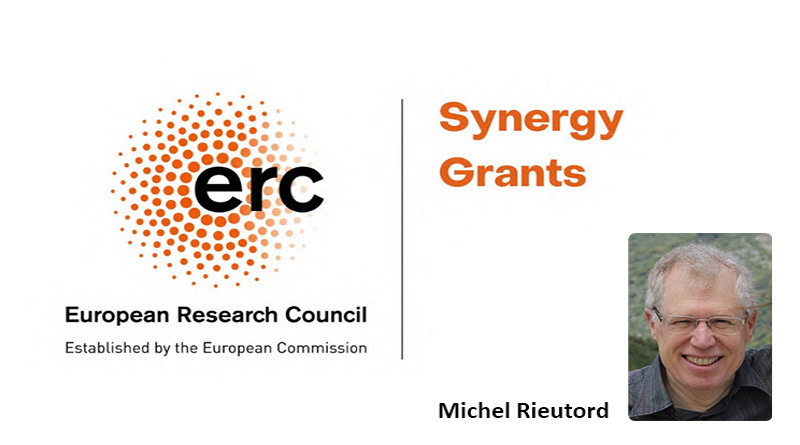Michel Rieutord, astrophysicist at IRAP, laureate of the prestigious ERC Synergy Grant
The European Research Council (ERC) has just awarded this prestigious grant to Michel Rieutord, professor at the University Toulouse III – Paul Sabatier at the Institute for Research in Astrophysics and Planetology (IRAP/OMP – CNRS/CNES/UT3). The 4D-STAR project, funded at nearly 10 million euros over 6 years, aims to develop innovative three-dimensional numerical models for rotating magnetic stars throughout their evolution.

Stars are the source of radiation, chemistry and life in the Universe. Given their crucial role in astrophysics, much effort has been devoted to their observation from the ground and from space. In this context, space asteroseismology, i.e. the study of stellar vibrations using space missions, has revolutionized our knowledge of the internal structure, evolution, dynamics and magnetism of stars. However, to deduce the basic properties of objects in the Universe, such as their age, chemical composition or mass, most astrophysicists rely on simplified, one-dimensional stellar models, considering stars as perfect spheres.
This approach, which neglects for example the flattening of stars due to their rotation or other multidimensional dynamical processes in their interior, gives an unstable basis to astrophysics, introducing among other things major uncertainties on stellar ages. The precise age of stars is indeed a missing but fundamental ingredient to understand stellar and planetary evolution, the emergence of life and chemistry in our Universe.
The objective of this scientific project is to develop a new basis resting on a more robust model aggregating several research fields. “Indeed, to build these new stellar models, a transdisciplinary approach is necessary, combining astrophysics, fluid dynamics, mathematical modeling and high-performance numerical calculation,” confirms Michel Rieutord of the University of Toulouse III – Paul Sabatier, a world-renowned expert in astrophysical fluid dynamics and a pioneer in the development of two-dimensional models of spinning stars.
Thanks to this high-potential approach, the 4D-STAR project will make it possible to develop multidimensional stellar models, calibrated using asteroseismic data, which will be made available to the entire scientific community.
Further Resources
The ERC Synergy Grants of the European Union’s Horizon Europe research and innovation program enable teams composed of two to four world-class researchers to combine their skills, knowledge and resources in an ambitious project aimed at solving the most challenging research problems. These projects usually involve several scientific disciplines. In the case of the 4D-STAR project, these are astronomy, theoretical physics, fluid dynamics, applied mathematics and the development of methods and numerical codes using high performance computing. Also involved in the project are:
- Conny Aerts, of KU Leuven in Belgium, project coordinator, is a world leader in asteroseismology,
- Aaron Dotter, from Darmouth College, USA, one of the world leaders in the development of numerical codes for astrophysics,
- Stéphane Mathis, from the Institut de recherche sur les lois fondamentales de l’univers (IRFU – CEA), internationally recognized in theoretical astrophysics for the study of stars and planets.
IRAP Contact
- Michel Rieutord, michel.rieutord@irap.omp.eu






